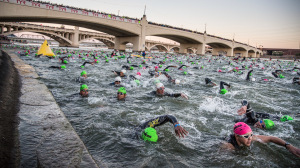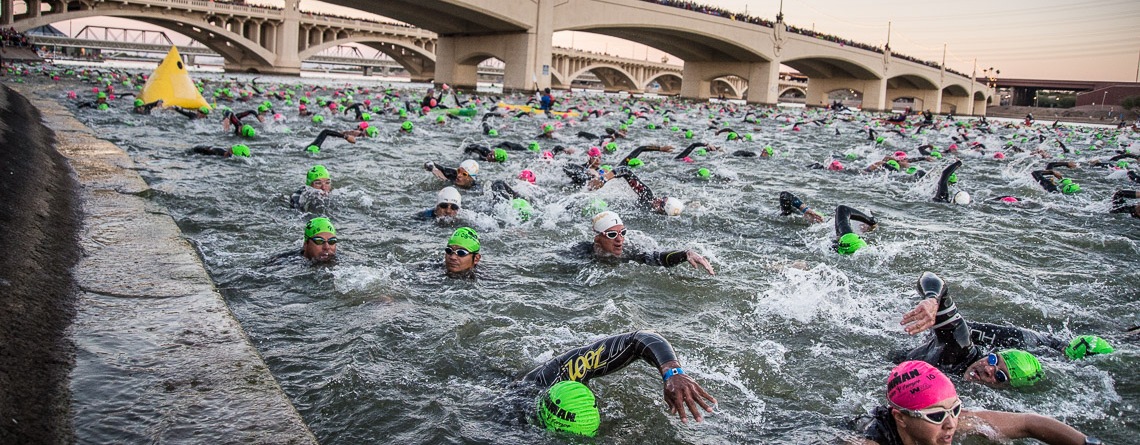By Emma Moriarty

On Nov. 16, 3,000 Arizona residents made their way down to Tempe Town Lake to swim, bike, and run 140.6. Out of the 3,000 participants, one may seem extremely familiar to the TPA community. History and Humane Letters teacher Kolby Granville was one of those daring enough to attempt the Arizona 2014 Ironman.
When questioned why he decided to enter this grueling race, Mr. Granville says, “I did a 1/2 Ironman October 2013 and decided that a full seemed possible. So, I signed up in November 2013 for the November 2014 race and started training. As for why do an Ironman length race? Really, just to see what limits I can push myself to. Could have been a 50-mile run or anything else. Ironman just happened to catch my interest.”
To people who do not plan on ever doing about a two-and-a-half-mile swim, biking for 112, and then doing a full marathon, these types of races may seem insane. Even to do a Silverman (only 70.3 miles) one must be only half-crazy. This race in particular takes a bare minimum of 15 hours of training every week. With the recommendation of beginning training a year before the race, that totals an enormous 783 hours of hard work and dedication.
With the hours of training that go into competing in an Ironman, race day still gets some people on edge. Mr. Granville shares his feelings about beginning the race: “The swim really made me nervous. Most triathlons have swim starts in waves by age division, so you are typically only swimming with around 100 people. Ironman has everyone start at the same time. So, 3,000 people all swimming from the same start. I was very worried about getting kicked in the face or hand.” Along with worries of being hit by other swimmers, there is the ominous cut-off time. With the race beginning at seven and the cut-off being midnight, athletes have 17 hours to complete this race.
After putting in immense amounts of time, money, and effort into this race, it seems that there should be a reward the participants receive. If not, why would one ever attempt to do this? Mr. Granville says, “I would say it was very rewarding. The most rewarding part was heading into the race, after a year of training, and knowing I had stuck to my training plan and not simply given up on a goal.” This helps highlight the most difficult part of the race, which is not crossing the finish line, but simply putting a foot over the start. Deciding to give 15 hours of your time every week into this and never giving up is more demanding than any other part of this race.
On what he took away from competing and training, Mr. Granville says, “The main thing I took away was something I suspected, but didn’t know for sure, and that is, the human body can basically do anything. Anything. It is the most impressive machine ever created. It’s the only machine that gets stronger with use, instead of wearing down. I feel like if I wanted to do basically any distance race, with time to train, I could do it.”
